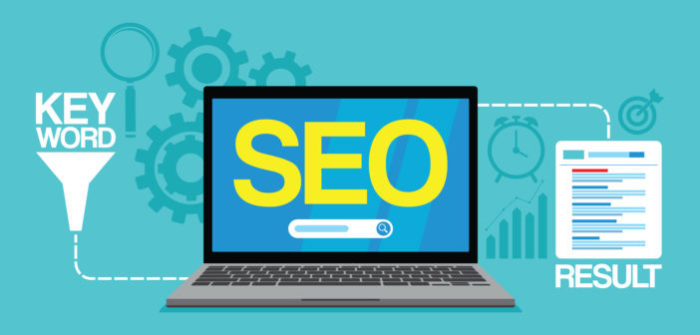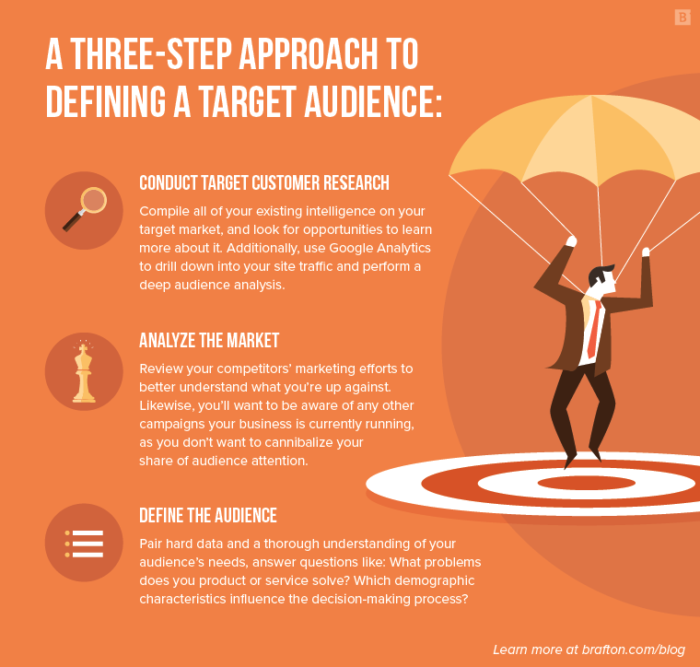Over the past decade, lead generation has grown exponentially and helped raise businesses from the ground up.
Although technology is advancing by the day, the digital lead generation still goes back to its roots: marketing.
The first newspaper was published in the late 1600s, which is considered the earliest form of marketing.
Soon after, billboards, radio and television commercials, infomercials, and e-mails find their place in the marketing world.
Cut to today, there are various forms of lead generation and online marketing, and tools developed especially for it.
One of which is the digital lead generation.
But apart from gaining access to these tools, you also have to accept two things. One, these tools can only be used if you have the knowledge to use them. Two is that you can’t do it alone.
A lot of B2Bs and B2Cs are hesitant about how exactly lead generation, digital marketing, digital advertising, and outsourcing as a whole works.
It’s easy to doubt something that you don’t fully understand, which is why we’ve put together a list that will make it easier for you to understand how exactly are leads generated online!
What is Lead Generation and Digital Marketing? How Does it Work?

(Image Source: SEO Expert Andy)
Put simply, lead generation is reeling strangers into your company and creating potential clients.
And it’s not as creepy as it sounds, we promise! It’s been around for pretty much an entire decade.
It’s not just attention-grabbing. It is also building rapport and keeping that interest alive.
A lot of lead generation has much to do with trust and the name you build for yourself.
Whether it’s getting people to believe in your products or using your services.
Getting people to warm up and believe in what you have to offer starts with you, the way you present your product or service, what your company’s values and beliefs are.
And with every different kind of company, there are a ton of different strategies.
Outbound Marketing has also been around for the longest time, making use of cold calls, media buying, and pretty often even e-mail spamming.
During the 1800s, magazines had the upper hand in the marketing world.
Infomercials and e-mails also had a wide reach for a while, but with the widespread use of the internet and social platforms, they have since been dormant in generating leads.
Outbound marketing is said to be of high cost but low returns.
Since it has been around longer than most methods, companies have this notion that lead generation and digital marketing doesn’t yield many results.
Inbound Marketing is where paid marketing comes in, content creation and opt-in email marketing falls under this category.
We’ve gotten used to traditional marketing methods, be it on print or digital platforms. But these days, most lead generating strategies and services now include newer, fresher methods.
Blog posts, social media content creation, and even YouTube videos are some of the more popular options that people have gotten high leads and returns.
And of course, how can we forget? Search Engine Optimization (SEO) is the process of priming the presence of your business in — you guessed it — search engines.
This is a pretty effective form of lead generation and digital marketing, what with “Google” being made a verb. Google it, we hear it all the time.
The options make up a nearly never-ending list of options.
What is a Lead?
Leads consist of every single person whose interests you’ve piqued.
From strangers who just happened to stumble upon your site, to potential customers, to returning or regular clients, these are what we aim for with any business.
But because these are people who we aim to keep around, it is so much more than just a reach.
It is creating brand awareness, making your values known, and building synergy and harmonious relationships. It is increasing both the quality of what you have to offer and the quality of the people or companies that are after it.
There are a multitude of different leads:
Sales leads or sales qualified leads (SQL)
– SQLs generated when contacts have committed to becoming a paying client/customer. They usually show interest by asking about products or services.
Product qualified leads (PQL)
– PQLs are those who have tried your brand’s products and converted them into consumers.
Service qualified leads and marketing qualified leads also exist for other businesses that do not sell products but offer other services, like B2Bs.
Marketing qualified leads are those that are potentially interested, while sales qualified leads are those who are already willing to pay.
Digital lead generation is deemed the most effective because of the utilization of everything at your disposal, especially with how far media reaches.
Which is The Best Lead-Generation Digital Marketing Strategy for Me?
Unfortunately, there is no one-size-fits-all for generating digital leads.
there is no one-size-fits-all for generating digital leads. Share on XWhich method to go with is most likely up to what kind of business you are. B2Bs, B2Cs, B2B2Bs, C2Cs, and all the other Cs and Bs operate differently.
This list is meant to summarize the effective ways to get leads, which will help you discern which route to go.
A lead generation tool that has proven to be effective and successful since it launched is LeadFuze.
Finding Passive Candidates
LeadFuze gives you all the data you need to find ideal, passive job candidates.
Go through a variety of filters to zero in on the leads you want to reach. This is crazy specific, but you could find all the people that match the following:
- People who have worked in Computer Software
- Who held a title of Lead Developer OR Lead Engineer OR Head of Engineering
- That have NOT been a CTO or Chief Technical Officer
- And currently make $85,000 to $100,000 in salary
- While having javascript skills
- Who are currently unemployed
- Who are likely to fit culturally due to liking Back to Future OR Fast and the Furious
How Do I Generate My Leads Online?
1.) Website Optimization
Every successful business has a platform they start on.
In most cases, it’s a website. Having one naturally increases your brand’s integrity.
Contrary to popular belief, a lot of work goes into building a website, and with that work comes with its corresponding costs.
Despite this, you will have to consider that an optimized website will make for a stronger call-to-action.
Remember that you are trying to stand out, capture the attention of prospective clients, and keep it that way.
There will have to be something that sets you apart. Your website should be the first.
SEO plays a crucial part in the traffic driven to your website by using the right amount of keywords and phrases.

(Image Source: Telemedia Online)
Why are keywords important?
Keywords will land your company’s websites in relevant searches that may reach people who may be invaluable to your business. Using them in the correct phrases will come hand-in-hand with this.
Keywords will be the foundation of your entire website, because what is an attractive cover without the substance?
Imagine that a potential client is looking for everything that you have to offer, but they don’t even know you exist, all because of your lack of keywords!
They may be small details in hindsight, but they are the very things that will make or break a website’s success and ultimately attract relevant and effective traffic.
SEO statistics state that organic searches (unpaid searches) generate about 50% of a site’s traffic, which is a lot, considering that paid searches only generate around 10%.
Google takes up a whole chunk of that search engine traffic, and it’s usually because it provides users with the most relevant answers, which is what everyone is looking for in the first place.
Consider also how your URL structures are looking. Do they use a lot of unnecessary characters? Or are they straight-to-the-point? Keep URLs precise.
So you’ll want to start with what you already have. Paid searches and advertisements can only do so much if they are spectacular, yet your website is pretty much invisible.
Optimizing your website to cater to these requirements will be a little taxing. For transparency’s sake, it takes a lot of revisions, trials and errors, and some frustrating moments.
But a little patience goes a long way, especially since modifying your site will be mostly free and will be well worth it when you get the returns you were aiming for.
Fear not, there are also many different digital lead generation services that can help you with this.
Ultimately, the further the reach, the more credibility you gain.
SEO statistics state that organic searches (unpaid searches) generate about 50% of a site’s traffic, which is a lot, considering that paid searches only generate around 10% Share on X
2.) Platform Improvement
In connection with the first important step, your website already has all the necessary keywords and phrases.
It means that although your website has the substance, there’s still no action happening.
It goes both ways. Beauty is just as important as substance — at least in the digital marketing industry.
Your platform sets the first impression.
Ease of access on a platform, especially on a website or landing page, is the first most important thing to consider.
You’ll want everything where they are easily seen and readily available to prospective clients.
Most companies tend to stick to the “less is more” mindset when they develop their websites.
While this is true for most cases, you also want to consider what you’re trying to sell.
A simple layout can be enhanced with striking colors and images. Font style and size can also heavily influence whether people bother reading your stuff or click out.
You’ll also need to come up with unique selling points (USPs) that set you apart from competitors.
These are most effective when they are shown at the top of every page. Highlight these selling points. They should be direct and convincing.
Menus should be limited to menus and sub-menus, anything more than that tends to be confusing and ends up looking cluttered.
Landing pages, banners, pop-ups, promotions, and surveys will be bait. Create a site hierarchy that makes sense.
Page speed is another thing to consider. Are your images and graphics too large? It will slow down site traffic because of how difficult it will be to get the page open.

What do you want your brand to represent?
A theme makes your brand look cohesive and put together.
Your ultimate target has to be a great user experience. If people have a hassle-free experience the first time they open up your website, chances are they will be back for more!
Trust us on this one!
3.) Identify Your Target Market
One of the essential things to be considered before even starting a business is who is it for?
Sure, your products or services may be designed specifically for this audience, but are you using the right tools to reach them?
Are your platforms optimized and geared towards the right groups of people?
Are your vision and values powerful enough to bait and catch these groups of people?
What might be lacking in your plan? What do your competitors have that you don’t?
Do you even have a marketing plan at all?
These might be questions that are difficult to answer as a business founder or developer, but they are necessary to make the changes that will boost your leads.
As mentioned previously, you’ve got an endless list of tools you can explore, you just need to identify which ones can benefit you.
If your current choices don’t bring back anything, you may want to consider a different route.
Studying marketing trends won’t hurt. Despite the come-and-go, the following trends will also get you noticed.
Memes and social media content used to be taboo, but a little humor goes a long way!
Gather stats of where you’re generating the most traffic.

(Image Soure: Brafton)
Where and who are they reaching?
Age demographic is a vital factor in lead generation. Initially, you’ll want to consider a specific age group, but if your products or services are flexible, you can create content that will appeal and resonate with anyone. The more, the merrier!
4.) Social Media Presence
Let’s face it, everyone is on the internet. From your great grand auntie who you swear you’ve never even met, to your nephew who was only 4 last time you checked.
You’ve identified your target market, so it’s time to kick it up a notch.
Social media is the go-to place of almost everyone, over 3.80 billion daily users to be exact.
And in just a millisecond, someone from across the globe can be up-to-date on something happening far away from them.
Do you see how this can boost whatever you’re trying to sell?
The thing about social media is that it leans more towards producing quality content rather than a large quantity of content.
Just like many things in life, the hierarchy of social media is topped by Facebook. In fact, by 2023, it is expected to reach a whopping 2 billion!
In fact, by 2023, it is expected to reach a whopping 2 billion! Share on XBecause of this, you can expect a surge of traffic to your business if you market it correctly on this platform.
Joining Facebook groups is a great place to start. It contains your target market, and you’re not only putting content out, but you’re also learning a thing or two.
Instagram, now owned by Facebook, is the next most effective platform. Despite being restricted to mostly images, fleeting stories, and short videos, it still has a massive impact on the social media industry.
You can curate a cohesive Instagram feed, interact with potential customers. Instagram has also become full-time for other creators.
YouTube has also taken the world by storm. With it being the first video-sharing platform of its kind, it’s been home to a large number of content creators.
Video creation is impactful because you can fit more content into lengthy videos, unlike the other two platforms that only allow a certain number of minutes.
Content creators and other influencers have become an asset to the way information circulates.
They are called “influencers” because their viewers have deemed them credible enough to influence the things they engage in, the products they use, the services they avail of, and even the way they live.
And of course, LinkedIn is the platform that basically “substitutes” your CV. It shows your deliverables, your past jobs, and your integrity, even.
Social media is an excellent way to gain your brand some points, so make sure to make the most out of it.

(Image Source: Online Marketing Institute)
5.) Interact With Your Leads
Engaging in real conversations with your potential customers will most likely get you the farthest.
Like we mentioned earlier, a lot of digital lead generation and marketing, in general, are built on trust.
You are more likely to gain trust when you show that you are relatable, easily approachable, and trustworthy.
For B2Cs and other businesses that offer products, it is easy to let your products speak for themselves if you know that you put your heart and soul into the production process.
Vouching for it without being too annoying will make potential consumers want to try it out, as opposed to being pushy, which drives them away.
For B2Bs that offer services, it is a bit more challenging because most of your potential clients rely on your methods of persuasion.
Being able to connect with them on a personal level is the first step.
An effective campaign consists of answering the questions what, how and why:
- What can you offer them that competitors can’t?
- What sets you apart?
- How can you deliver?
- How are your methods are effective?
- Why should they trust you?
- Why should they choose your service?
6.) Product Trials and Promotions
Many businesses start with trials, giveaways, and promotions.
Having people try your product or service for free or at a lower price is effective because people will end up wanting more.
Contests and giveaways will generate traffic because more people will want a chance to win.
You’ll never know until you try, right?
Key Takeaway
In conclusion, digital lead generation has basically replaced print ads so most businesses do turn to these methods.
Keep in mind that this list we’ve come up with is not the end-all-be-all of digital marketing lead generation, it’s just a starting mark.
And just like any other business, you will have to start somewhere. Success doesn’t happen overnight.
Whether it be no returns, slow returns, or peaking and then just reaching a plateau, lead digital marketing and lead generation has their ups and downs, just like most anything in this world.
The only way to go from stagnancy is to create. To try new things. To gamble.
Create content, search for new solutions, study trends, and don’t be afraid to fail.
Failure plays a huge part in the growth. Brands and services will need growth in order to stay afloat in a limitless industry.
See, that’s the thing with a system that is constantly changing day-by-day.
Yes, you will need to step up your game, come up with new strategies, and constantly look for solutions to your problems.
Then again, there will always be a continuous stream of ideas, ready for you to explore.
Want to help contribute to future articles? Have data-backed and tactical advice to share? I’d love to hear from you!
We have over 60,000 monthly readers that would love to see it! Contact us and let's discuss your ideas!

